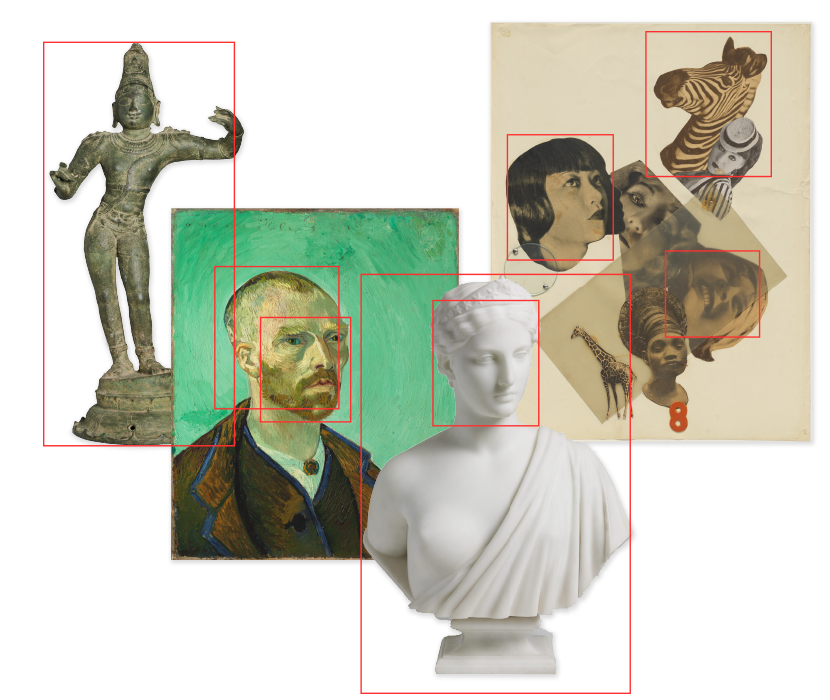Artificial intelligence when united with art advances how humans understand and interact with artworks. Specifically, the Harvard Art Museums is using computer vision to categorize, tag, describe, annotate, and humanize its collections. We start by giving each AI an image of an artwork. We then ask it to describe what it sees. The machine views and describes the museum’s collection with no additional context. It’s as if the machine is walking into an art museum for the first time. Since the computer lacks context or artistic knowledge beyond what is depicted in each image, the machine’s interpretations of the artworks lean closer to reflecting the public rather than experts. By folding in an AI’s perspective, browsing and searching art becomes more accessible and intuitive to non-museumgoers.
Not only are the Harvard Art Museums using AI to promote accessibility in art, but other institutions are also pursuing similar efforts. For example, MoMA with the Google Arts and Culture Lab used artificial intelligence to connect older exhibit photos dating back to 1929 to their online collection, allowing greater public access to their exhibition history. Additionally, the machine’s unique perspective can be used to aid art historians—researchers at Rutgers University have used machine learning to uncover previously unnoticed connections of influence between artists. As art institutions are becoming more aware of artificial intelligence, the scope of its real-world applications continues to expand.


